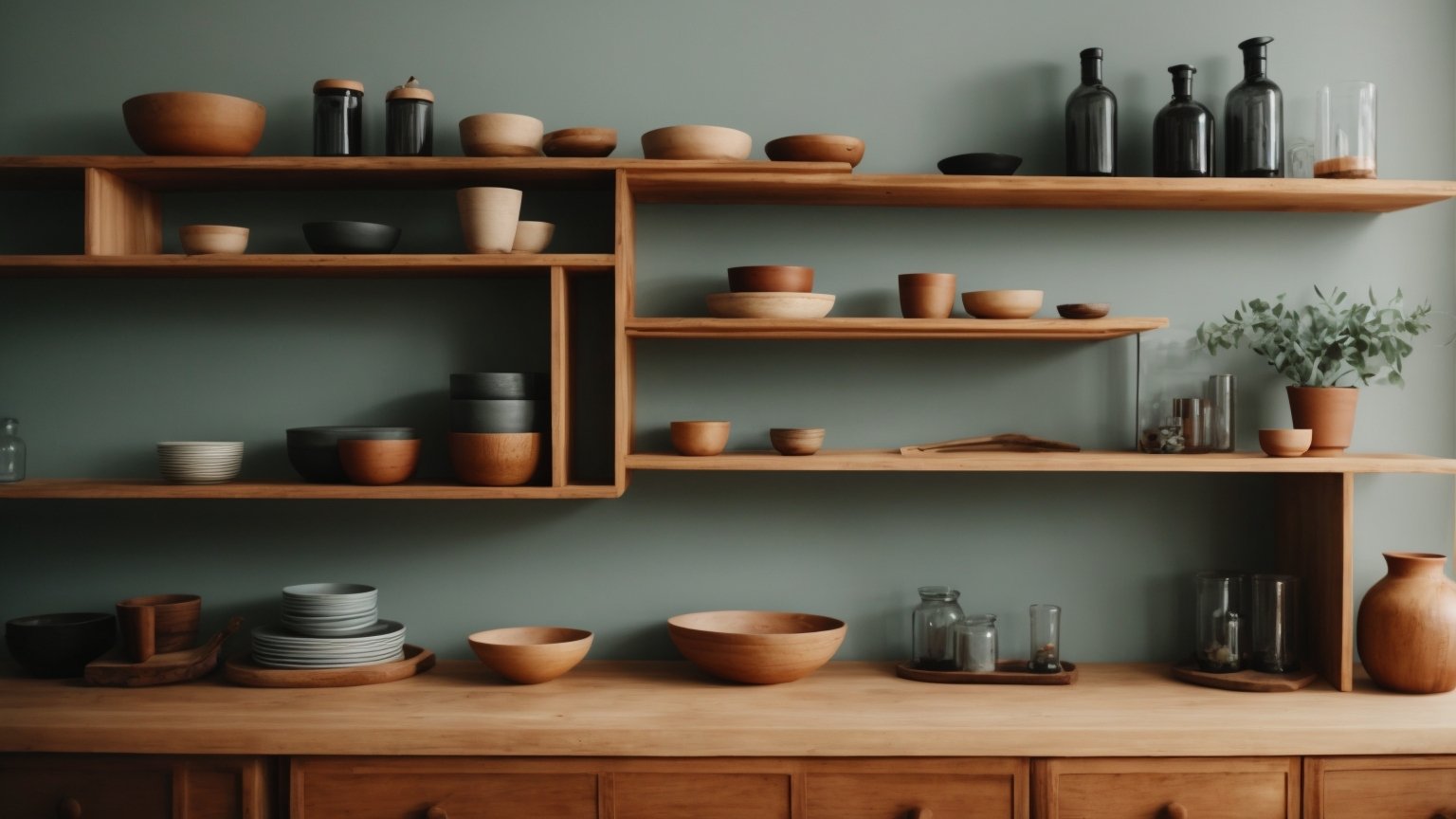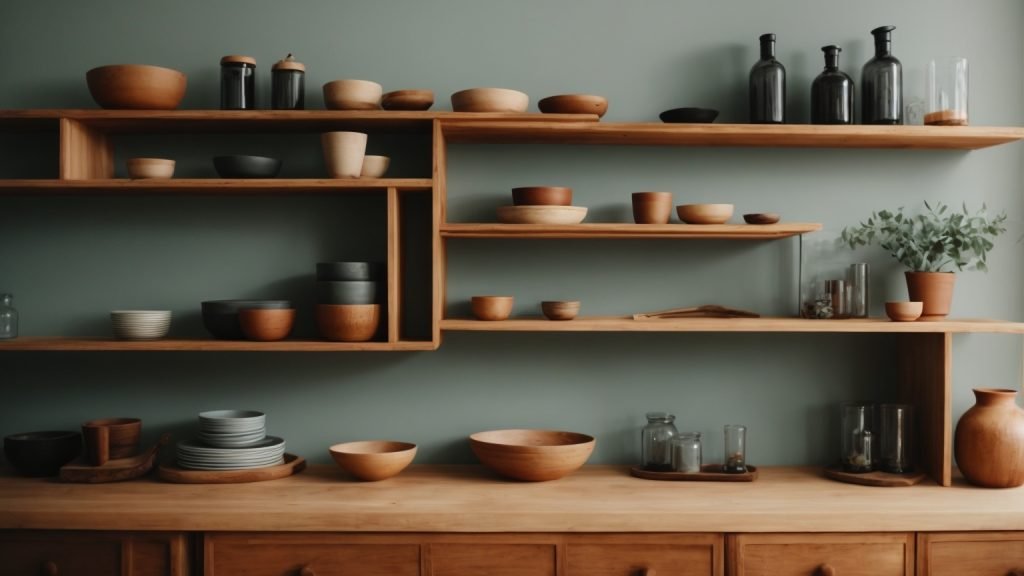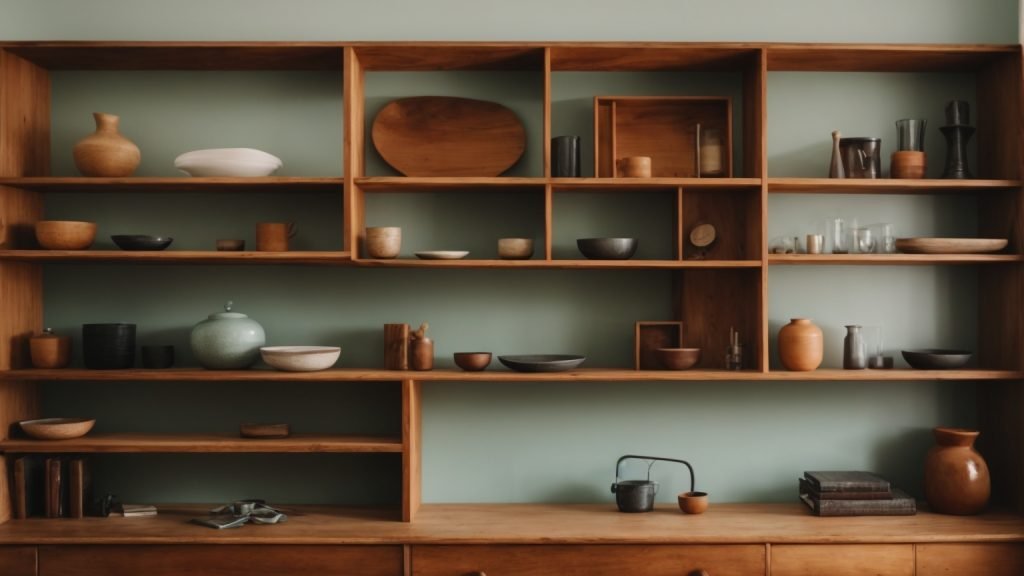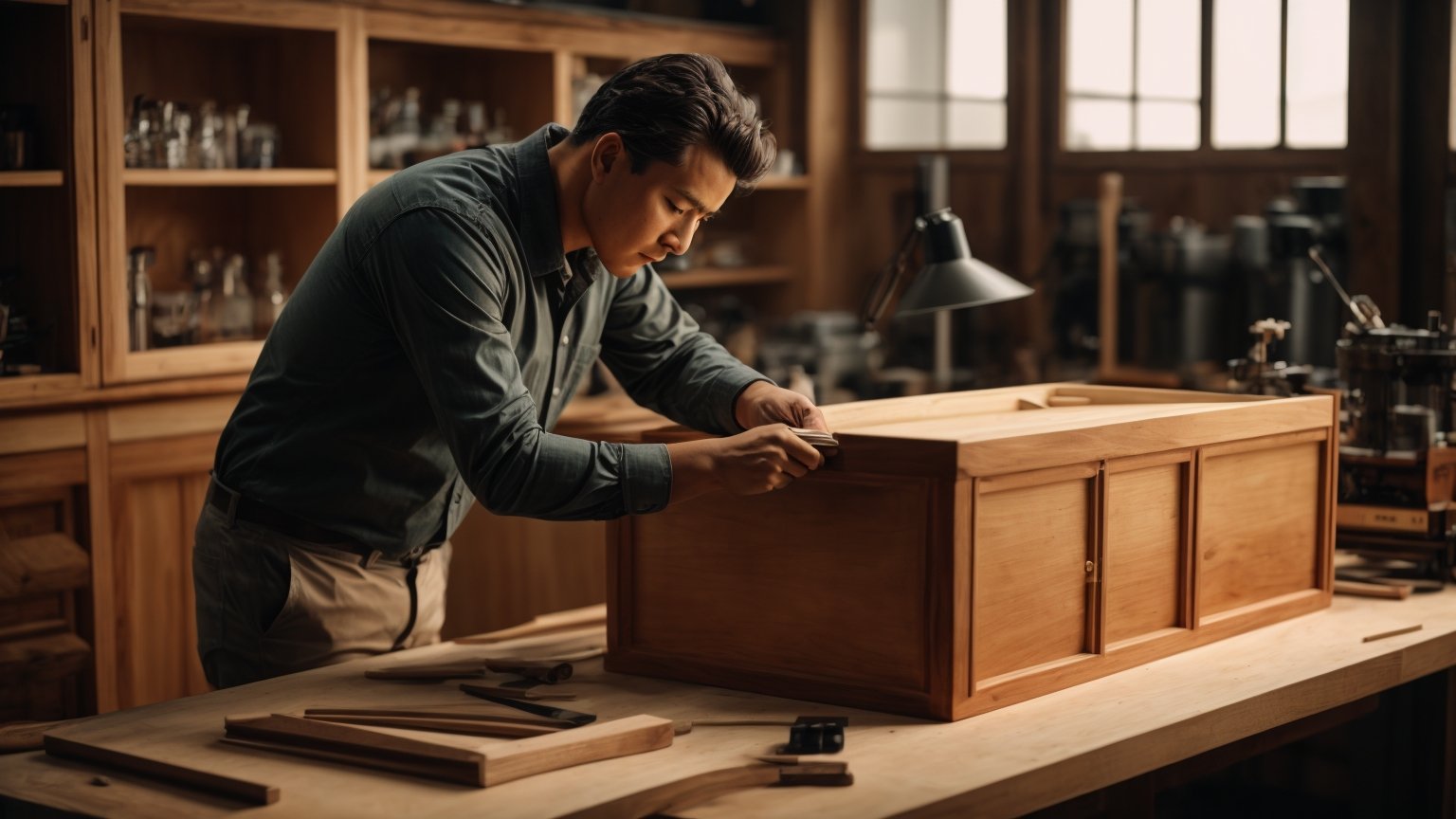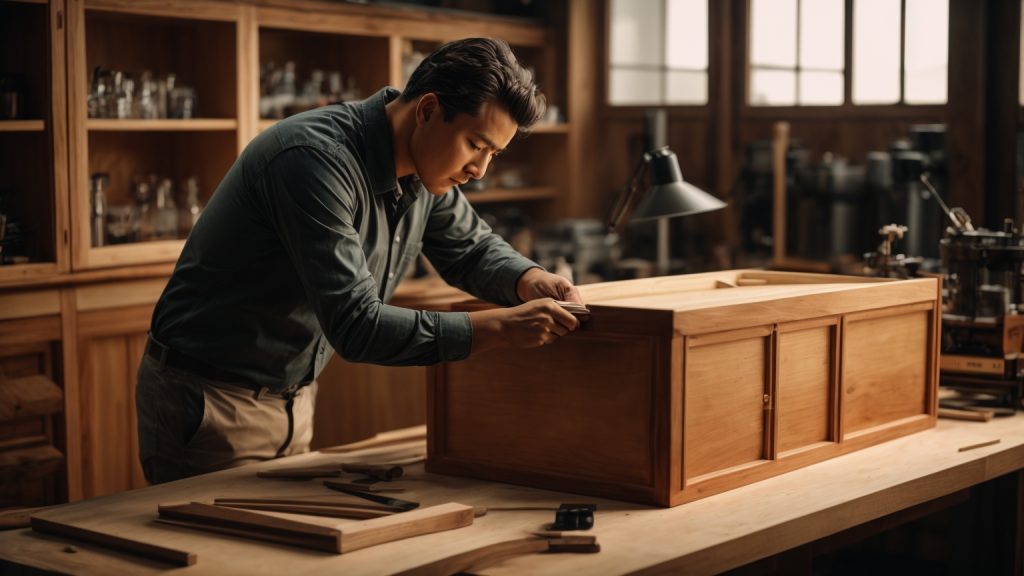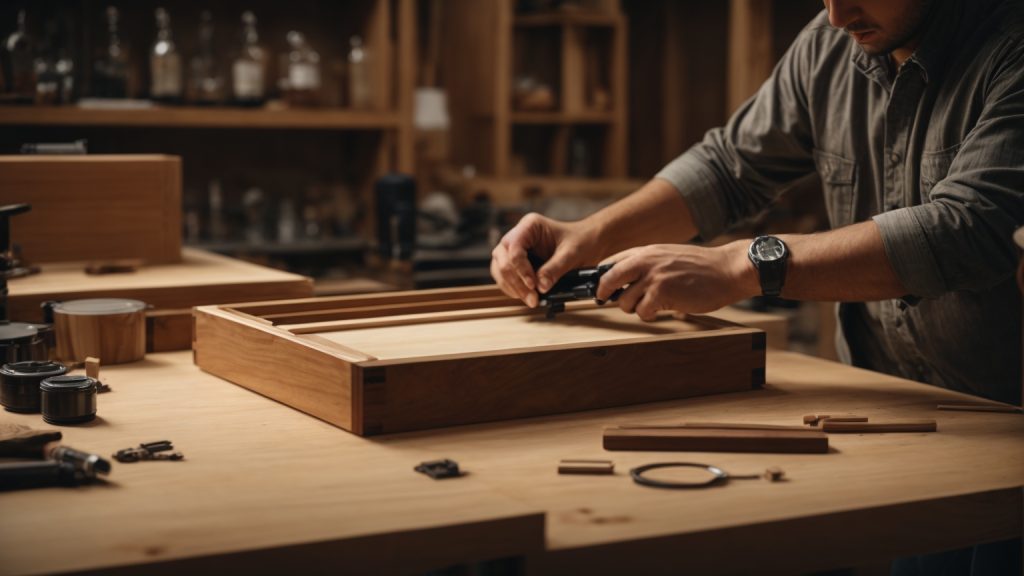If you’re a fan of smoking and woodworking, then you might want to try your hand at making a wooden pipe. Not only is it a fun and creative project, but it also allows you to have a unique smoking experience. With a few basic tools and materials, you can create a beautiful and functional wooden pipe.
Before you start making your wooden pipe, it’s important to choose the right type of wood. Hardwoods like cherry, maple, and oak are great options because they are durable and have a nice grain pattern. Softwoods like pine and cedar are not recommended because they can be too porous and can affect the taste of the smoke. Once you have your wood, you can begin shaping it into the desired shape and size. There are many different styles of pipes, so choose one that suits your taste and skill level.
Understanding the Basics of a Wooden Pipe
When it comes to smoking, wooden pipes are a classic choice. They are easy to make and provide a natural, earthy flavor to your smoking experience. In this section, we will cover the basics of a wooden pipe, including the types of wood used, pipe anatomy, and tools required.
Types of Wood
The type of wood you choose for your pipe will affect the flavor of your smoking experience. Here are some common types of wood used for making pipes:
- Briar: This is the most popular and traditional wood used for pipe making. It is a dense, hard wood with a natural resistance to fire and moisture. Briar pipes are known for their cool smoke and sweet flavor.
- Cherry: This wood is a popular choice for beginners because it is easy to work with and has a mild, sweet flavor. Cherry pipes are also known for their beautiful grain patterns.
- Maple: This wood is a good choice for those who prefer a milder flavor. Maple pipes are also known for their durability and resistance to cracking.
Pipe Anatomy
A wooden pipe consists of three main parts:
- Bowl: This is the part of the pipe where you pack your smoking material.
- Stem: This is the long, narrow part of the pipe that you put in your mouth.
- Shank: This is the part of the pipe that connects the bowl and stem.
Tools Required
To make a wooden pipe, you will need the following tools:
- Saw: You will need a saw to cut the wood to the desired size and shape.
- Drill: You will need a drill to create the hole in the bowl for your smoking material.
- Sandpaper: You will need sandpaper to smooth out the rough edges of the wood.
- Pipe cleaner: You will need a pipe cleaner to clean out the stem and shank of your pipe after each use.
Now that you understand the basics of a wooden pipe, you are ready to start making your own. Remember to choose the right type of wood for your smoking preferences and to use the proper tools for the job. Happy smoking!
Choosing the Right Wood
When it comes to making a wooden pipe, choosing the right wood is crucial. The type of wood you select will affect the overall quality and durability of your pipe. Here are some things to consider when choosing the right wood for your pipe:
1. Hardwoods vs. Softwoods
Hardwoods are generally the best choice for pipe making because they are denser and more durable than softwoods. Some popular hardwoods for pipe making include briar, cherry, maple, and oak. Softwoods like pine and cedar can also be used, but they are more prone to cracking and burning out over time.
2. Grain Orientation
The orientation of the wood grain is also important. You want to choose a piece of wood with a straight, uniform grain that runs parallel to the length of the pipe. This will help prevent the pipe from cracking or warping over time.
3. Toxicity
Some woods, like yew and ebony, can be toxic when burned or inhaled. It’s important to research the toxicity of any wood you plan to use before making your pipe.
4. Curing Process
The curing process is important for stabilizing the wood and preventing it from cracking or warping over time. Some woods, like briar, undergo a special curing process before they are used for pipe making. Other woods can be cured by air-drying or kiln-drying.
5. Availability and Cost
Finally, consider the availability and cost of the wood you plan to use. Some woods, like briar, can be expensive and difficult to find. Other woods, like cherry and maple, are more readily available and affordable.
By considering these factors, you can choose the right wood for your pipe and ensure that it will be durable, high-quality, and enjoyable to use.
Designing Your Pipe

When it comes to designing your wooden pipe, there are a few things to consider. First, think about the shape and style of the pipe. Pipes come in all shapes and sizes, from straight and simple to curved and intricate. The shape you choose will depend on your personal preference and the level of difficulty you are comfortable with.
Next, consider the type of wood you want to use. Different types of wood will give your pipe a unique look and flavor. Some popular options include cherry, briar, and rosewood. Make sure the wood you choose is dry and free of knots or imperfections.
Once you have chosen your shape and wood, it’s time to start designing the details. You can add decorative elements such as carvings, inlays, or stains to give your pipe a personalized touch. Keep in mind that some designs may be more difficult to execute than others, so choose a design that fits your skill level.
Finally, consider the size and weight of your pipe. A pipe that is too heavy or too large may be uncomfortable to use, so make sure to take these factors into account when designing your pipe.
Overall, designing your wooden pipe is a fun and creative process that allows you to express your personal style. With a little planning and attention to detail, you can create a beautiful and functional pipe that you will enjoy for years to come.
Cutting and Shaping the Pipe
To start making your wooden pipe, you need to cut and shape the wood to the desired size and shape. Here are the steps to follow:
- Choose the right wood: You can use any type of wood to make a pipe, but some types are better suited for the job. For example, hardwoods like cherry, maple, and oak are strong and durable, and they have a nice grain pattern that looks great when finished. Softwoods like pine and cedar are easier to work with, but they may not last as long.
- Cut the wood to size: Use a saw to cut the wood to the desired length and width. The size of the wood will depend on the size of the pipe you want to make. A typical pipe is about 5-6 inches long and 1-2 inches wide.
- Shape the wood: Use a chisel or sandpaper to shape the wood to the desired shape. You can make the pipe straight or curved, and you can shape the bowl and stem to your liking. Take your time and be careful not to remove too much wood at once.
- Drill the bowl: Use a drill bit to make a hole in the center of the bowl. The size of the hole will depend on the size of the pipe you are making and the type of tobacco you plan to smoke. A typical hole size is about 1/2 inch in diameter.
- Drill the stem: Use a smaller drill bit to make a hole in the stem of the pipe. The size of the hole will depend on the size of the stem and the size of the bowl. Make sure the hole is centered and straight.
- Smooth the edges: Use sandpaper to smooth the edges of the pipe and remove any rough spots. You can also use a wood file or rasp to shape the edges to your liking.
By following these steps, you can cut and shape your wooden pipe to the desired size and shape. Remember to take your time and be careful not to remove too much wood at once. With a little patience and practice, you can create a beautiful and functional wooden pipe that you can enjoy for years to come.
Creating the Pipe Bowl
To create the bowl of your wooden pipe, you will need to follow a few simple steps. Here’s how to do it:
Step 1: Choose Your Wood
When it comes to choosing the wood for your pipe bowl, there are a few things to keep in mind. First, you’ll want to choose a hardwood that is suitable for smoking. Some popular choices include briar, cherry, and maple.
Second, you’ll want to make sure that the wood is dry and seasoned. This will help prevent cracks and warping as the wood dries further during the pipe-making process.
Step 2: Cut Out the Bowl
Once you’ve chosen your wood, it’s time to cut out the bowl shape. You can use a template or stencil to ensure that your bowl is the right size and shape.
Use a saw or other cutting tool to carefully cut out the bowl shape. Take your time and make sure that your cuts are clean and precise.
Step 3: Carve the Bowl
With the bowl shape cut out, it’s time to start carving the inside of the bowl. Use a carving knife or other tool to carefully hollow out the bowl. You’ll want to create a smooth, even surface that is deep enough to hold your tobacco.
Step 4: Sand and Finish
Once you’ve carved the bowl, it’s time to sand and finish it. Use sandpaper to smooth out any rough edges or uneven surfaces. Then, apply a finishing oil or wax to protect the wood and give it a nice shine.
And that’s it! With these simple steps, you can create a beautiful wooden pipe bowl that is ready to be assembled into a fully-functional smoking pipe.
Drilling the Stem

Now that you have the basic shape of your wooden pipe, it’s time to drill the stem. This will allow smoke to travel from the bowl to the mouthpiece.
Here are the steps to follow:
- Secure the pipe in a vise. Make sure the pipe is held firmly in place so it doesn’t move around while you’re drilling. If you don’t have a vise, you can use clamps or another method to hold the pipe steady.
- Choose the right drill bit. You’ll need a drill bit that’s the same diameter as the stem you want to create. For example, if you want a stem that’s 1/4 inch in diameter, you’ll need a 1/4 inch drill bit.
- Mark the drill bit with tape. Measure the depth you want the stem to be and mark the drill bit with a piece of tape so you know when to stop drilling.
- Start drilling. Hold the drill bit perpendicular to the pipe and slowly start drilling. Be careful not to drill too fast or apply too much pressure, as this can cause the wood to split or crack.
- Clean up the hole. Once you’ve drilled the stem, use a small file or sandpaper to smooth out the edges of the hole. You want it to be as smooth as possible so smoke can flow through it easily.
- Test the draw. Place your mouth over the mouthpiece and inhale gently. You should feel air flowing through the stem and into your mouth. If the draw is too tight, use a larger drill bit to widen the hole slightly.
That’s it! With these simple steps, you can create a stem that’s perfectly sized for your wooden pipe.
Finishing the Pipe
Once you have completed the construction of your wooden pipe, it is time to give it a finishing touch to make it look polished and professional. In this section, we will discuss the three main steps involved in finishing your pipe: sanding, staining, and polishing.
Sanding
Sanding is an important step in finishing your wooden pipe. It helps to smooth out any rough edges and give your pipe a sleek finish. To sand your pipe, you will need sandpaper of varying grits, ranging from coarse to fine. Start with a coarse grit sandpaper and work your way up to a finer grit. Make sure to sand in the direction of the wood grain to avoid any scratches or damage to the surface.
Staining
Staining your wooden pipe is an optional step, but it can add a touch of color and character to your pipe. Before staining, make sure to sand the surface of your pipe to remove any dirt or debris. Apply the stain evenly using a brush or cloth, and let it dry completely before applying a second coat. Choose a stain that is safe for smoking pipes and avoid using any toxic chemicals.
Polishing
Polishing your wooden pipe is the final step in finishing your pipe. It helps to protect the surface and give it a shiny finish. To polish your pipe, you can use a wax or oil-based polish. Apply a small amount of polish to a clean cloth and rub it onto the surface of your pipe in a circular motion. Let it dry for a few minutes before buffing it with a clean cloth.
By following these simple steps, you can give your wooden pipe a professional and polished look. Remember to take your time and be patient during the finishing process to achieve the best results.
Maintaining Your Wooden Pipe
Congratulations on making your very own wooden pipe! Now that you have your new smoking accessory, it’s important to know how to properly maintain it to ensure its longevity. Here are a few tips to keep your wooden pipe in great condition:
Cleaning Your Wooden Pipe
It’s important to clean your wooden pipe regularly to prevent buildup and ensure a smooth smoking experience. Here’s how to do it:
- After each use, use a pipe cleaner to remove any excess debris from the bowl and stem of the pipe.
- Use a soft-bristled brush to gently scrub the inside of the bowl and stem with warm, soapy water.
- Rinse the bowl and stem thoroughly with warm water and dry with a soft cloth.
- Allow the pipe to air dry completely before using it again.
Oiling Your Wooden Pipe
To keep your wooden pipe looking like new, it’s important to oil it regularly. Here’s how to do it:
- Choose a high-quality, food-grade oil such as mineral oil or beeswax.
- Apply a small amount of oil to a soft cloth and rub it into the wood, being careful not to get any oil on the bowl or stem.
- Allow the oil to soak in for a few minutes, then wipe off any excess with a clean cloth.
- Repeat this process every few months to keep your wooden pipe looking and feeling great.
Storing Your Wooden Pipe
When you’re not using your wooden pipe, it’s important to store it properly to prevent damage. Here’s how to do it:
- Store your wooden pipe in a cool, dry place away from direct sunlight and heat sources.
- Use a pipe stand or holder to keep your pipe upright and prevent it from rolling around or getting knocked over.
- Avoid storing your pipe with tobacco in the bowl, as this can cause moisture buildup and damage the wood.
By following these simple tips, you can keep your wooden pipe in great condition and enjoy many smoking sessions to come.

